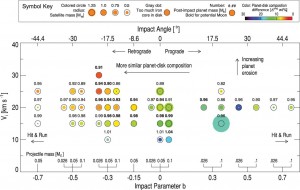
Figure 2 from Cuk & Stewart (2012) showing the range of model outcomes for different impact conditions.
In Friday’s DTM seminar, Sarah Stewart-Mukhopadhyay of Harvard gave a fascinating talk on the origin of the Moon and the effects of large impacts on the Earth’s volatile inventory.
Lots of evidence (geochemical and astronomical) say that the the Moon originated in a large impact between the proto-Earth and a roughly Mars-sized rogue planet (often called Theia). This explanation accounts for many of peculiarities of the Earth-Moon system, EXCEPT that geochemical data says that Earth and Moon probably formed out of the same material. Old models of the Moon’s formation showed that Moon should have formed mostly out of the impactor, Theia, which (like all other solar system planets) was probably compositionally distinct from the Earth. So the Moon SHOULDN’T be Earth’s compositional twin.
Instead, Stewart and Cuk suggested that the pre-impact Earth was spinning much faster than previously assumed, with a day that lasted about 2 hours, and so enough material from the proto-Earth could have been launched by the impact to make the Moon mostly out of the proto-Earth. Once the Moon formed, Stewart and Cuk suggested it could interact gravitationally with the Earth and the Sun to reduce the Earth-Moon angular momentum and bring it into line with what we see today, removing the one big objection to their fast-spinning proto-Earth idea.
In the last part of her talk, Stewart discussed what such large impacts might do to the gases trapped inside the young Earth. Contrary to popular thought, she suggested that these large impacts actually might NOT melt most of the Earth’s outermost layers, and so the Earth could retain in its interior much of the nebular gas that it was born with.
This idea could help explain geochemical data that suggest gas trapped in different parts of the Earth’s interior currently have different isotopic compositions and would mean that the Earth retains geochemical scars from its adolescence once thought completely erased by the violence of the early solar system.